Every week we get Down & Dirty, in which Nozlee Samadzadeh breaks down our favorite seasonal fruits, vegetables, and more by the numbers.

Peas! Today we're talking about peas, which are so ubiquitous as a readily-available frozen food that it's almost hard to remember that they are fleetingly in season come early summer. There are three major varieties of peas, and we'll be talking about them separately:
1. Shelling Peas (also called English peas or garden peas)
2. Snow Peas
3. Snap Peas (also called sugar snap peas)
Before we get started -- aren't these cross-sections beautiful? -- a little bit about starches and sugars. All of these peas develop an intense sweetness as they mature. If left on the plant for too long, those sugars are converted into starches: fibrous and tough, with less flavor. Always make sure your peas are fresh and young -- and preferably recently picked. The sugars in these plants also begin to degrade into starch after harvest, which is why the sweetest snap pea is one that you eat from the vine!
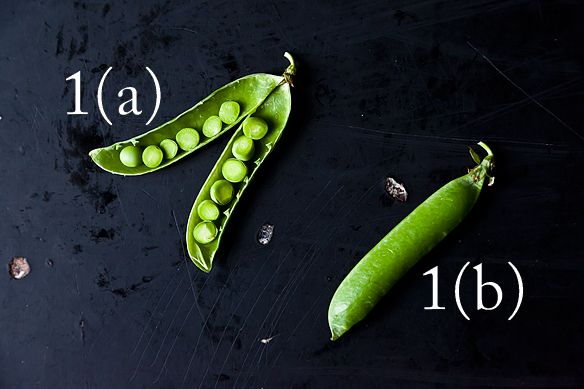
Shelling Peas
1(a). The Pods - To open a pea pod, pull down on the stem to string it and gently push out the attached peas. Shelling a pound of peas can take a while, so enlist a friend and get some gossip in while you work! (We halved this pod with a knife just for show, so don't do that.)
1(b). Buying Guide - When you're buying shelling peas at market, look for firm, round pods 3-4 inches long that rattle just a little when you shake them. They should be smoothly green and unblemished -- the peas hit peak sweetness and then rapidly become starchy, so avoid older-looking pods.
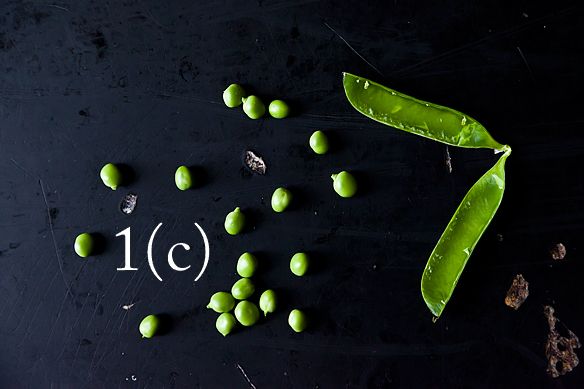
1(c). The Peas - Fresh peas should be blanched before serving. It takes less than a minute, so be sure to have a big bowl of ice water ready to stop the cooking after you drain them! And don't toss that pod -- they make a lovely, light spring stock when simmered in a few cups of water.
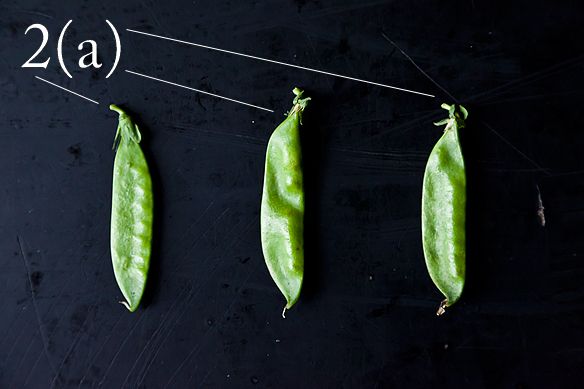
Snow Peas
2(a). The Pods - Snow peas should be stringed, too, although if they're young enough you won't need to. Snow peas are eaten whole, pod and all, and they're good raw, blanched, or blistered in a wok -- many Asian recipes call for snow peas.

2(b). The Peas - Because they're eaten whole, snow peas are harvested long before the peas inside reach maturity -- when buying them, look for very small, flat seeds. The pods themselves range from 2 to 3 inches.
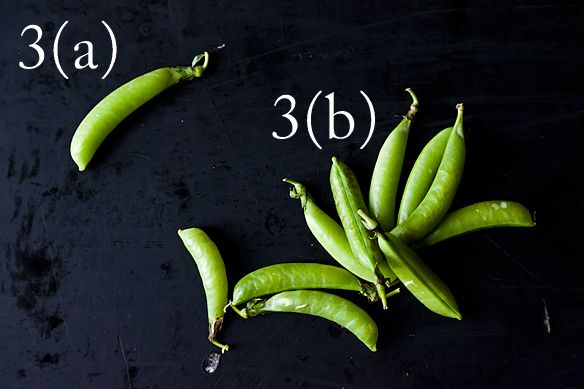
Snap Peas
3(a). The Pods - The best snap peas can be eaten raw: sweet, crunchy, and perfectly bite-sized. Slightly larger ones should be blanched or sauteed (after being stringed as for the other peas). Because you're eating the whole pod, look for pretty snap peas with no nicks or bruises.
3(b). History - Snap peas (also called sugar snap peas) are actually a man-made hybrid! They were developed by Calvin Lamborn in the 1970s when he wanted a pea that could be eaten raw or cooked. All peas are open pollinators, so with a little bit of time and care he was able to cross-pollinate snow peas with other pea plants to get the sugar snap. Remember learning about genes with Mendeleev's pea experiments? Snap peas are genetics in action!
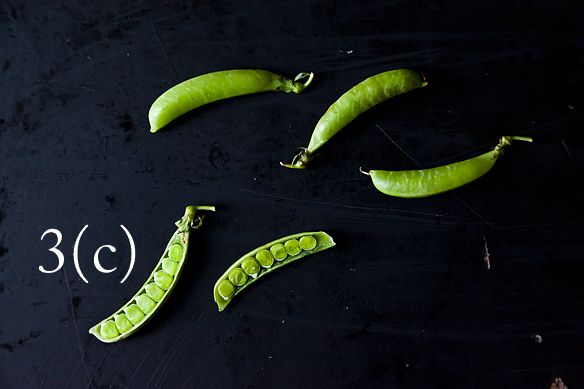
3(c). The Peas - The inside of a snap pea looks like the inside of a shelling pea if the pod was shrunken down and given much thinner skin. If, perchance, your snap peas grow too big and tough, you can always shell them and cook the peas separately.
With mutliple ways to eat peas both cooked and raw, you can use them in a huge variety of recipes. Here are three of our favorites: a crowd-pleasing chicken salad with rice noodles, lemon-chili sugar snaps with breadcrumbs, and peas just barely simmered in mint cream.
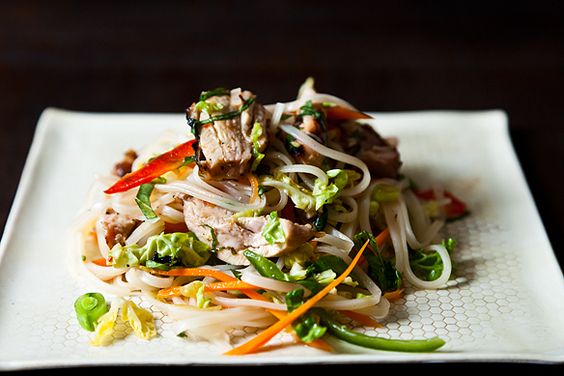
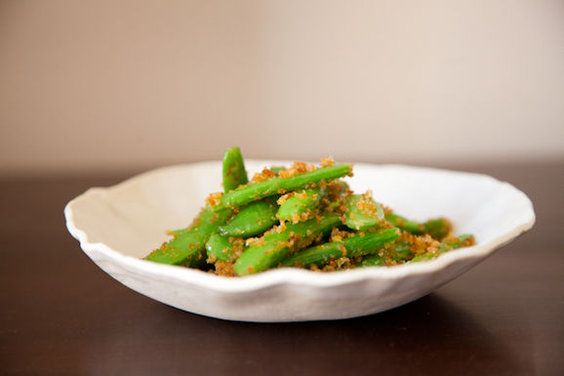
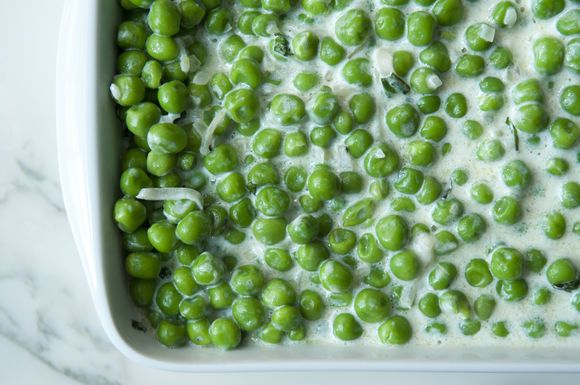











See what other Food52 readers are saying.